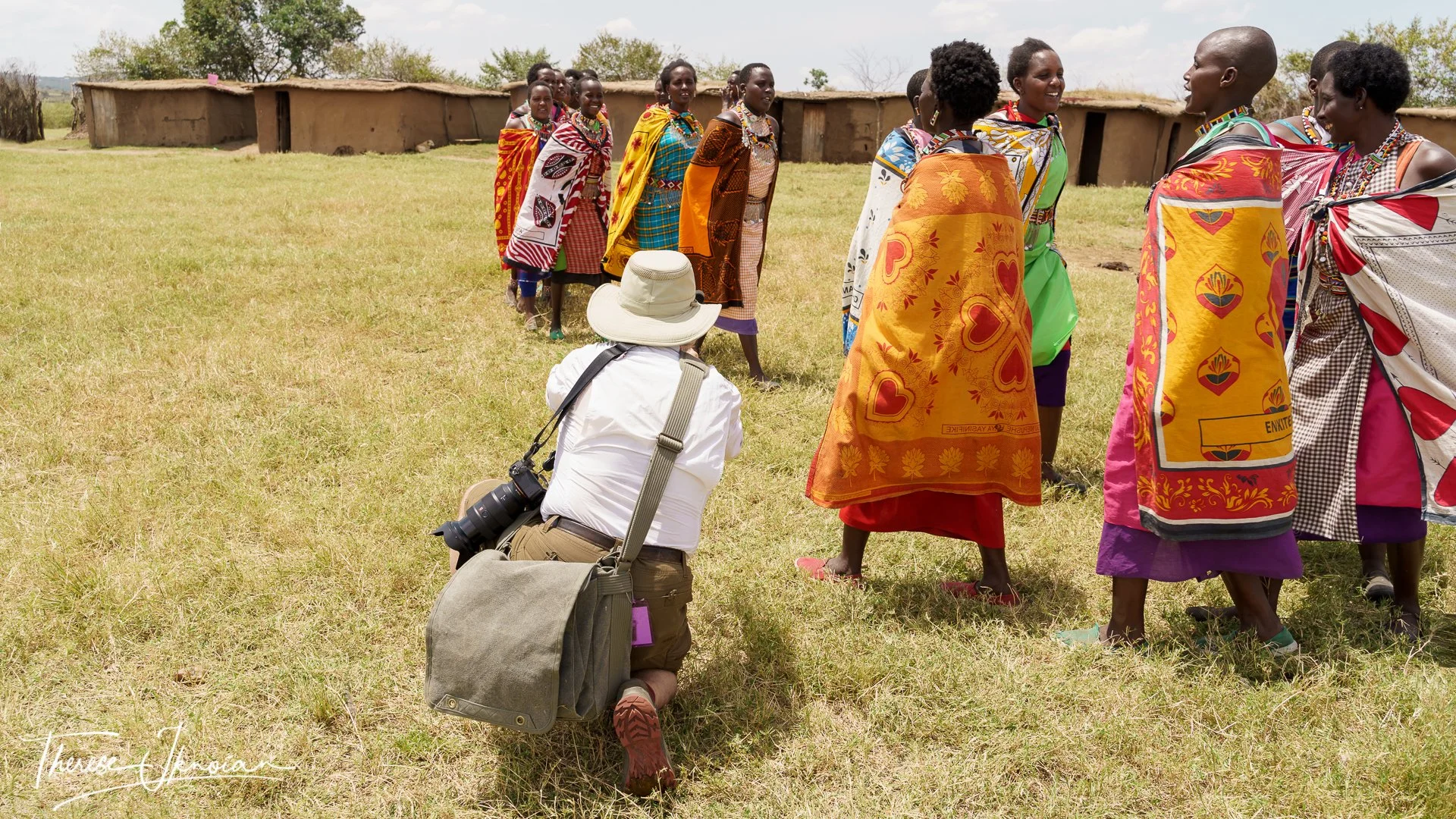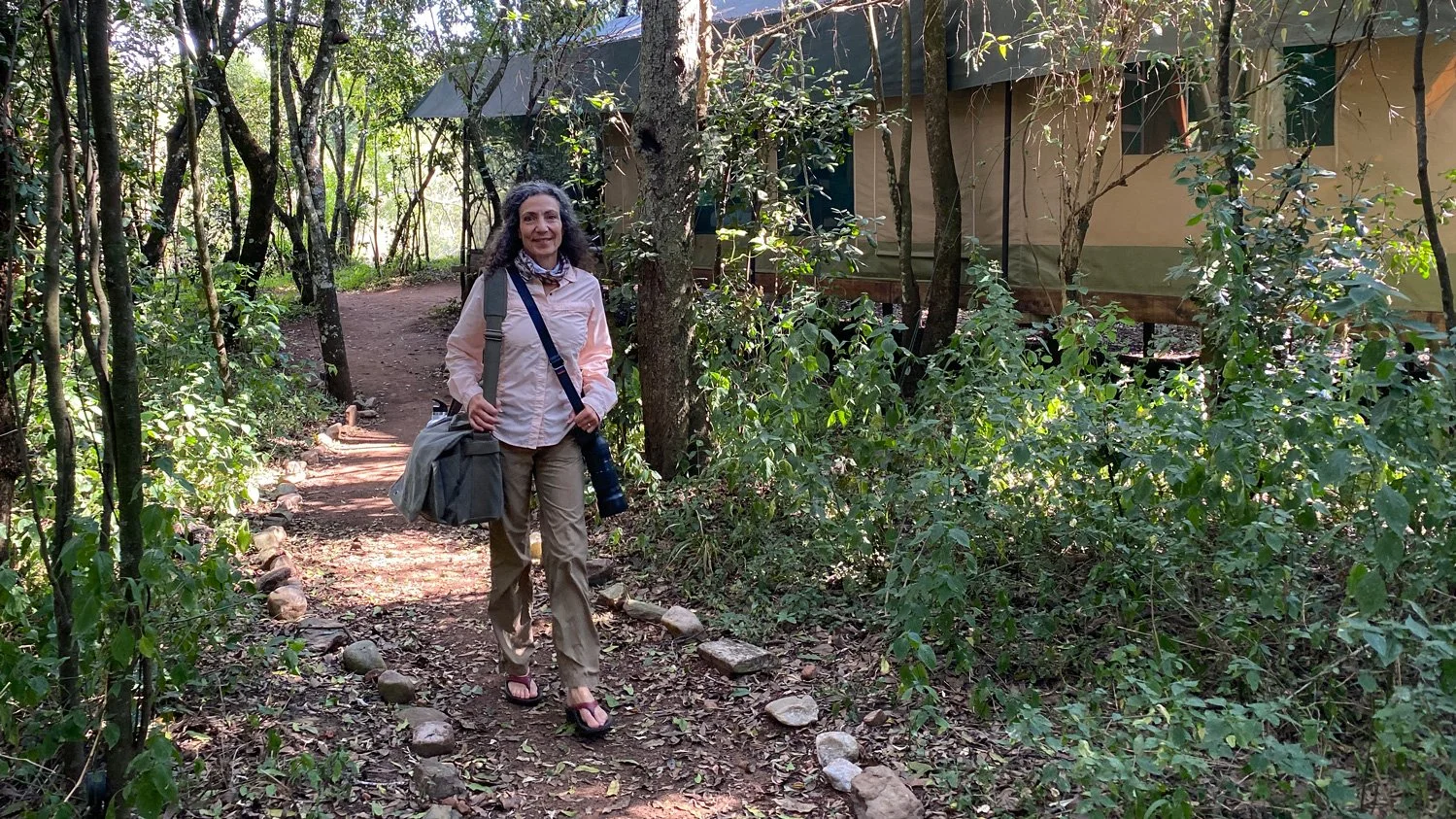How to pack camera gear for a photo safari
Your bucket list African photo safari is getting closer. You’ve gotten your immunizations, ordered your cargo pants, and stashed mosquito repellent. Now, the question is, how do you pack for a photo safari with all your camera gear?
Since you can’t pack all your photography equipment, the big question for many planning for a safari is how to pick, pack, and carry camera gear, both in transit and then on daily game drives.
We've been on a number of photo safaris in Kenya and, like others, there are always decisions to make with what to take as our carry-on for equipment and then how to translate that into efficiently carrying gear once in Africa.
As professional photographers, we of course have no shortage of lenses, camera bodies, and a wide range of accessories. So, how to decide what goes and how to manage it all? The answer to how to pack for a photo safari – then how to carry photography gear once there – is not that difficult. It comes down to ensuring you have the right lens and camera for the shots you anticipate needing to make, close at hand, but still protected from the inevitable dust and moisture that is also part of any safari.
Getting to Africa with your photography equipment
Assuming you fly into a city like Nairobi on a larger plane, the simplest carry solution for getting there is:
one roller bag or large backpack per person for getting all your equipment onto a plane and to your destinations, and
one shoulder bag or small backpack to take what you need into the 4WD vehicles for your daily photo game drives.
Yes, it’s that easy to pack your cameras and equipment for an African safari. Why? Remember, you are not allowed to walk around outside of the camps – due to risks from wildlife — so much of your movement will be via vehicle. And during the day, you only rarely get out of the vehicle (usually a short natural break or well-staged lunch stop), and you never get out and walk around for photos – unless you want to become a statistic. That means you don’t have to worry about strapping everything you need to your body, back, or shoulders. Once there, it simply sits in the jeep ready to be grabbed for photos.
That shoulder bag or small backpack mentioned above could even be folded up and packed into your checked luggage if you don’t need it to carry gear on the plane.
Therese with her photography gear (plus laptop computer and drives) in two carry-on size bags, a Think Tank Airport Advantage roller bag, and a Think Tank Retrospective shoulder bag.
Which type of photo bag fits your needs to get to Africa?
Which carry-on bags are right for you? Michael and I are different shooters and used two different systems to pack our gear and get to Africa:
Normally not a wildlife photographer – meaning I don’t have those huge, long lenses — I could fit my longest Sigma 100-400 f/5-6.3 lens (knowing that most wildlife shooting will be in daylight means a slower lens will work) and a smaller Tamron 70-180 f/2.8 with my two Sony camera bodies (at the time, the a6600 and a7c), along with a couple of shorter lenses and all those other accessories into the compact Think Tank Airport Advantage.
Michael, who is a passionate wildlife shooter, has a much larger Sony FE 200-600 f/5.6-6.3 and a Sony FE 70-200 f/2.8 with two Sony camera bodies (a7rV and a1). That all fit well into his Think Tank Backlight Elite 45L, along with a shorter lens, teleconverters, GoPro, and many accessories.
One wrinkle comes if you have a super telephoto that really won’t fit into a roller bag or small backpack or bag. Solution: One friend carried his huge lens alone, well-padded, in a small lightweight Think Tank Backlight 18L daypack with the rest of his gear in a Think Tank Airport International roller bag, then he used that daypack to carry miscellaneous gear onto the day’s vehicle and carried the camera with lens attached over his shoulder.
Carrying your cameras on a photo safari
Once at your African destination, the gear carry for a game drive gets easier since all you need to do is get the day’s gear into the jeep. We both used the Retrospective shoulder bags from Think Tank Photo (I had the 30L, and Michael had the 20L). The extraordinary number of pockets and durability were lifesaving (They look pretty cool, too). If you have less equipment, certainly a smaller bag will also do, perhaps more like 10-15L.
Michael's setup in the safari vehicle. One camera body with his longer wildlife lens, and another camera body with a shorter lens (often a 70-200) ready to go in his Think Tank Retrospective shoulder bag, which also carries extra batteries, various other lenses just in case and depending on what we anticipate seeing during the day, as well as lens cleaning supplies.
For each day’s photo safari, we used the shoulder bags to carry extra gear, batteries, charging cables, snacks, or layers into the vehicles, and then carried at least one of our two cameras with lenses over our shoulders. A second camera body with a shorter lens could then usually fit into our bags. A large water bottle was also part of the daily gear carry, but it could go directly into a bottle holder in the jeep.
Therese is heading out for the day, carrying a Think Tank Retrospective shoulder bag with her second camera body, other gear, and essentials, and her primary camera body with a longer lens slung over her shoulder.
In most cases, you'll likely find that one longer telephoto lens and one medium telephoto (prime or zoom) is all you need for daily game drives.
Other types of lenses may come in handy if you tour cities, visit a Maasai village, take a hot air balloon ride, enjoy street photography, or try some night photography from the camps. For example, we spent a couple of hours on an organized tour to a Maasai village, and we both switched to a wide-angle zoom combined with a medium zoom. At a village, you get up close to people and demonstrations, as well as get to go into the small huts, so wider is necessary.
Two wild horse mares and a stallion send water splashing as they gallop through the shallow water in Shackleford Banks North Carolina, in the Outer Banks. Shutter speed was 1/1000 with my camera positioned just above the water on a tripod with a gimbal.
In the end, how to pack for your dream African photo safari is a lot easier than imagined: A roller bag (unless you prefer a large backpack) to carry all the gear to Africa, and a small shoulder bag or daypack for each day’s game drives. And you won’t need as many lenses as you think, but be sure to have plenty of batteries, dust protection, and cleaning gear.
Now, all you have to think about is getting those awe-inspiring shots of elephants, rhinos, lion cubs, or the Great Migration.
A shorter version of this story originally appeared on the Think Tank Photo blog.





